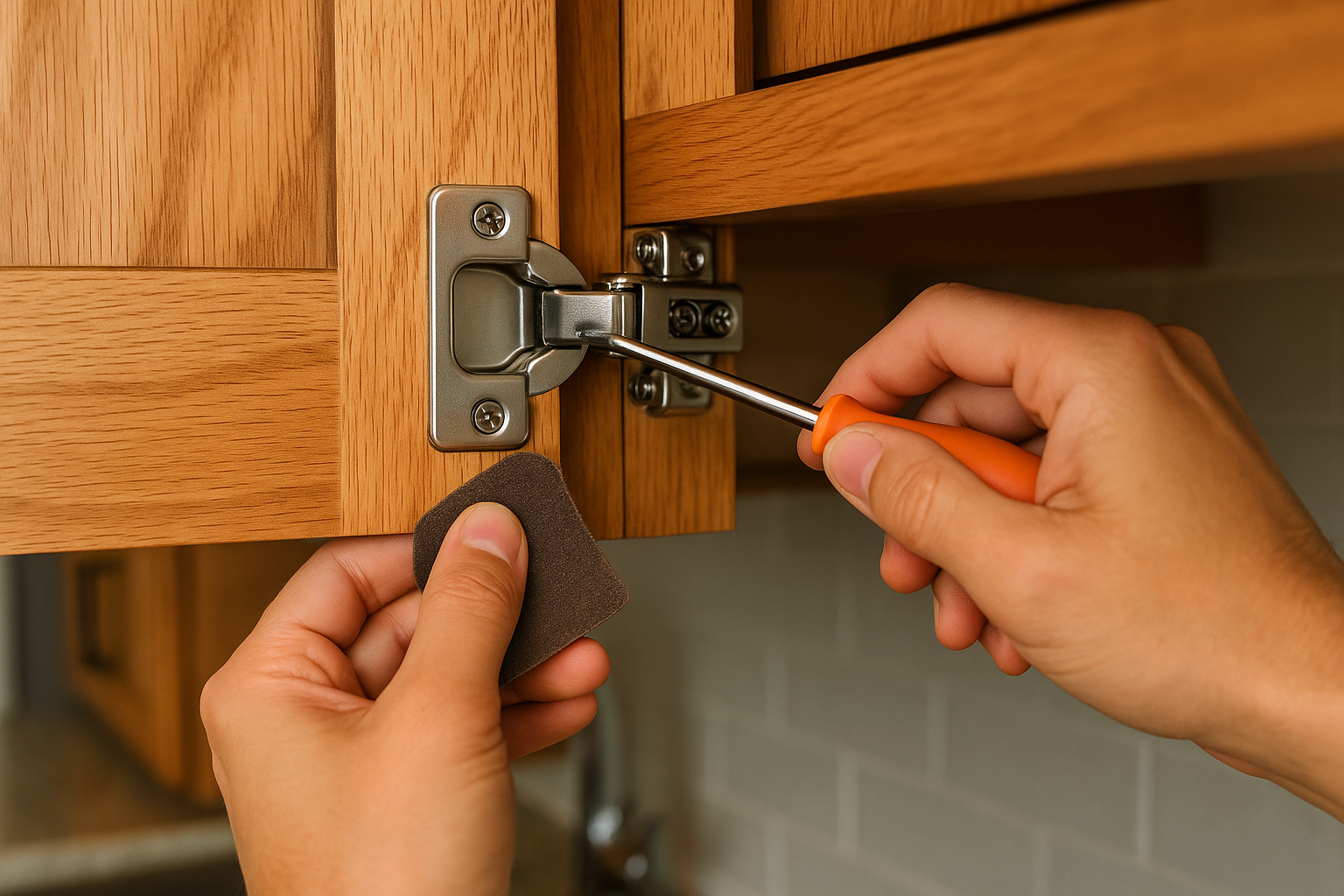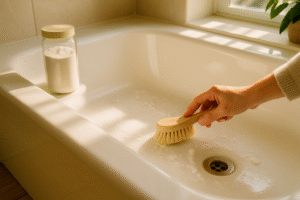Introduction: Why Door Latch Not Fully Retracting Matters
A door that won’t close properly can be frustrating, inconvenient, and even unsafe. One of the most common causes of this issue is when the door latch not fully retracting prevents the door from fitting snugly into the strike plate. Instead of clicking shut, the latch sticks out slightly, leaving your door misaligned or unable to lock. This seemingly minor problem can compromise your home’s security, reduce energy efficiency, and cause everyday annoyances when doors fail to close smoothly.
The latch mechanism works by sliding back into the door when the handle or knob is turned. Over time, dirt, rust, or mechanical wear can interfere with its movement. Sometimes, the problem is as simple as a loose screw or sticky buildup; in other cases, the latch spring may be worn down or misaligned. Regardless of the cause, learning how to fix a door latch not fully retracting is a valuable skill that saves time, avoids costly locksmith visits, and keeps your doors working as they should.
In this guide, you’ll learn the step-by-step process for diagnosing and repairing a faulty latch. We’ll cover the tools you’ll need, common mistakes to avoid, alternative solutions, and expert tips to ensure your fix lasts. By the end, you’ll be able to restore proper door function with confidence and enjoy the peace of mind that comes with a secure, smoothly closing door.
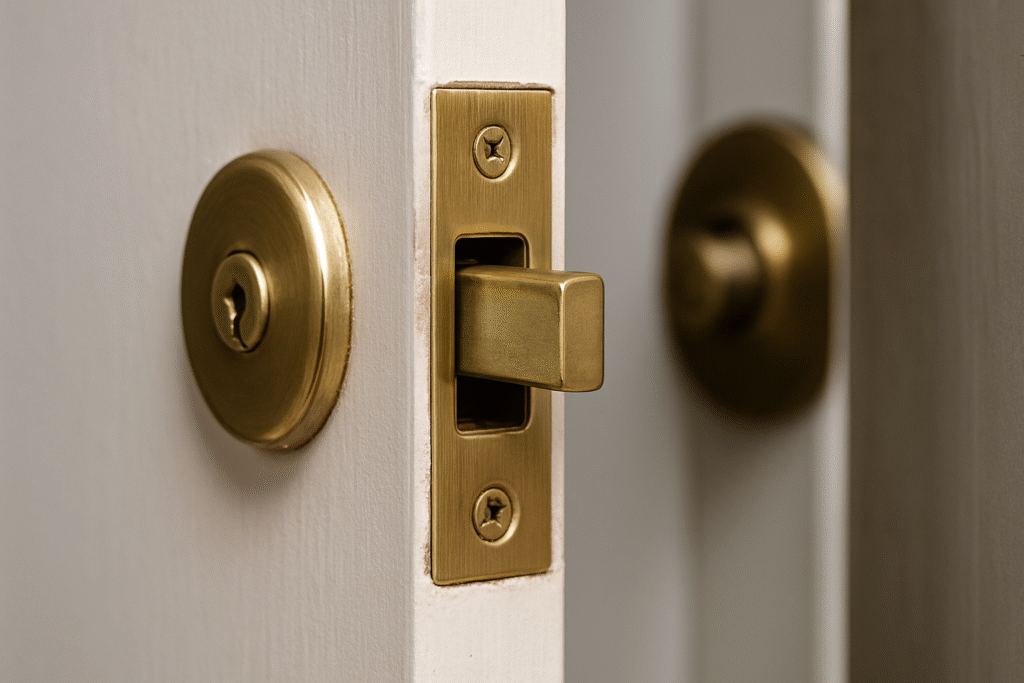
What You’ll Need Before You Start
Before fixing a door latch not fully retracting, it’s important to gather the right tools and materials. Having everything ready will make the repair smoother and prevent unnecessary interruptions. The tools required are generally simple and already available in most households, but each plays an important role in addressing the problem effectively.
You’ll need a screwdriver, typically a Phillips or flathead, to remove the doorknob and latch assembly for inspection. A small hammer or mallet may also be useful for adjusting parts that have shifted slightly. For cleaning and lubrication, keep a can of WD-40 or a silicone-based spray lubricant on hand. These help remove sticky buildup inside the latch mechanism that often prevents it from retracting fully.
In some cases, dirt and debris are the main culprits. For this, a small brush, cotton swabs, or even compressed air can be used to clean out the latch housing. Fine-grit sandpaper or a file may also be helpful if the latch or strike plate edges are rough or misaligned. If screws or other hardware are loose or stripped, having spare screws on hand ensures a more secure reassembly.
Finally, it’s important to prioritize safety. Wear gloves to protect your hands from sharp edges inside the door hardware and safety glasses if you’ll be using power tools or compressed air. With these supplies ready, you’ll be fully prepared to tackle the problem of a door latch not fully retracting and restore smooth, reliable door function.
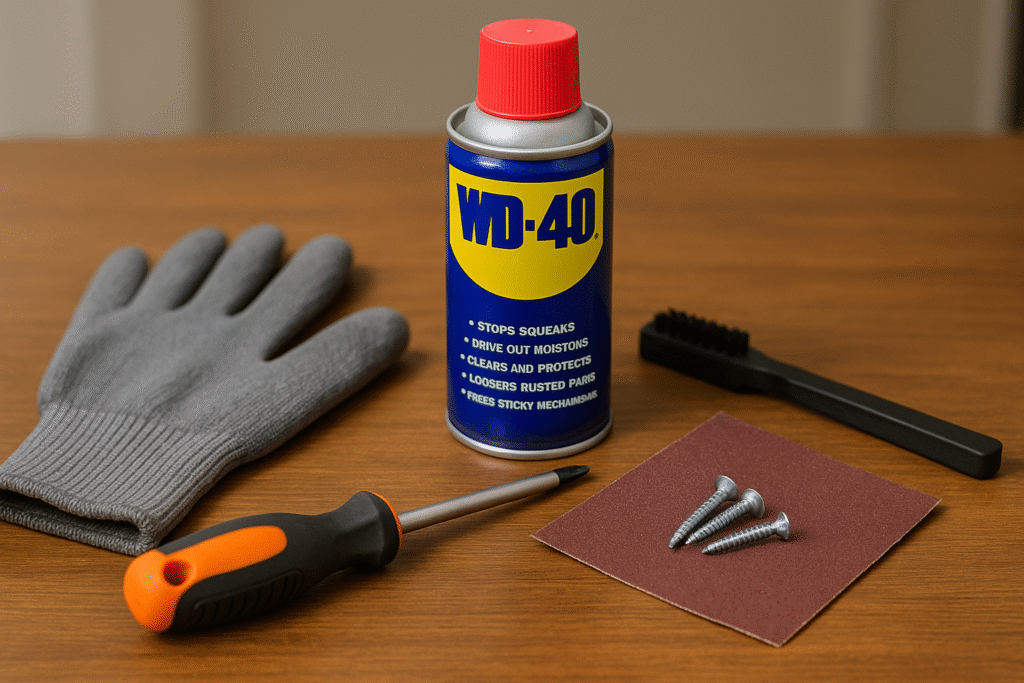
Step 1: Inspect and Test the Latch Mechanism
The first step in fixing a door latch not fully retracting is to carefully inspect the latch and test how it moves. Close the door slowly and observe whether the latch slides smoothly into the strike plate or if it sticks. Then, turn the doorknob or lever several times with the door open. Watch to see if the latch retracts all the way into the door and springs back out correctly when released. If the latch feels stiff, catches halfway, or doesn’t retract fully, there is likely dirt, misalignment, or a worn spring causing the problem.
Check for visible debris or corrosion around the latch faceplate. Sometimes dust, paint, or even rust can prevent the latch from sliding back smoothly. Press the latch directly with your finger and release it—this helps determine if the problem is internal or related to the knob and spindle mechanism. If the latch resists pressure or sticks in place, internal cleaning or lubrication will likely be required.
Also examine the strike plate on the door frame. A misaligned or damaged strike plate can stop the latch from retracting fully when the door closes. If the latch works fine when the door is open but sticks when shut, the strike plate or door alignment may be at fault. By thoroughly inspecting and testing the latch mechanism, you can identify the root cause of the issue and prepare for the right fix.
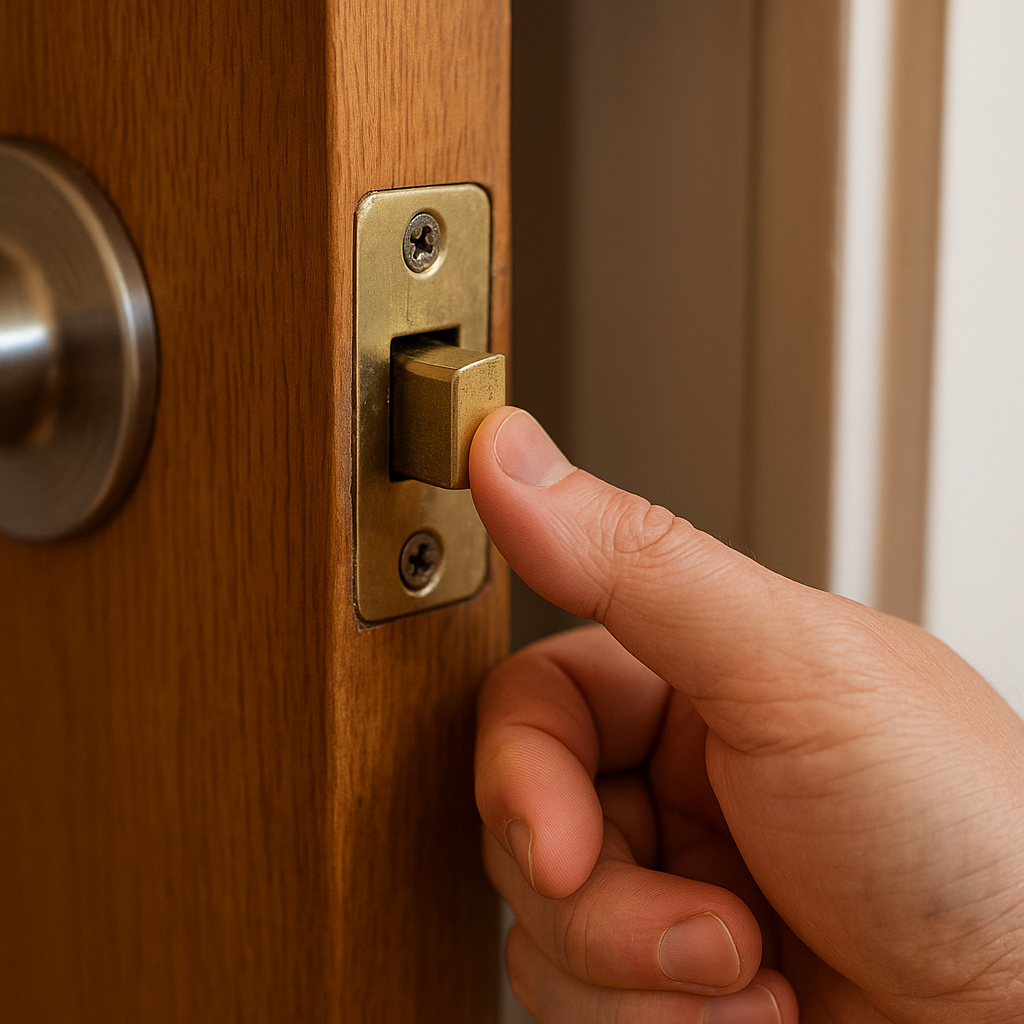
Step 2: Clean and Lubricate the Latch Mechanism
Once you’ve identified that a sticky or sluggish latch is causing the door latch not fully retracting, the next step is to clean and lubricate the mechanism. Over time, dust, grime, and even dried paint can accumulate around the latch, preventing it from sliding smoothly. Cleaning ensures the path is clear for the latch to retract and extend properly.
Start by spraying a small amount of lubricant, such as WD-40 or a silicone-based spray, directly into the latch opening. Use the straw attachment for precision to avoid overspray on the door surface. After spraying, turn the doorknob or lever several times to work the lubricant through the internal parts of the latch. This helps loosen any stuck components and distributes the lubricant evenly.
If the buildup is visible or heavy, use a small brush or cotton swab to clean around the latch faceplate and opening. In some cases, a toothpick or compressed air can help dislodge debris trapped inside. For stubborn dirt, lightly sand the latch edges with fine-grit sandpaper, being careful not to remove too much metal. Wipe the area with a clean cloth afterward to remove residue.
Proper cleaning and lubrication often resolve the issue of a door latch not fully retracting. If the latch now moves freely when tested, the problem may be solved. However, if the latch still sticks after cleaning, further inspection of internal parts or realignment may be necessary.
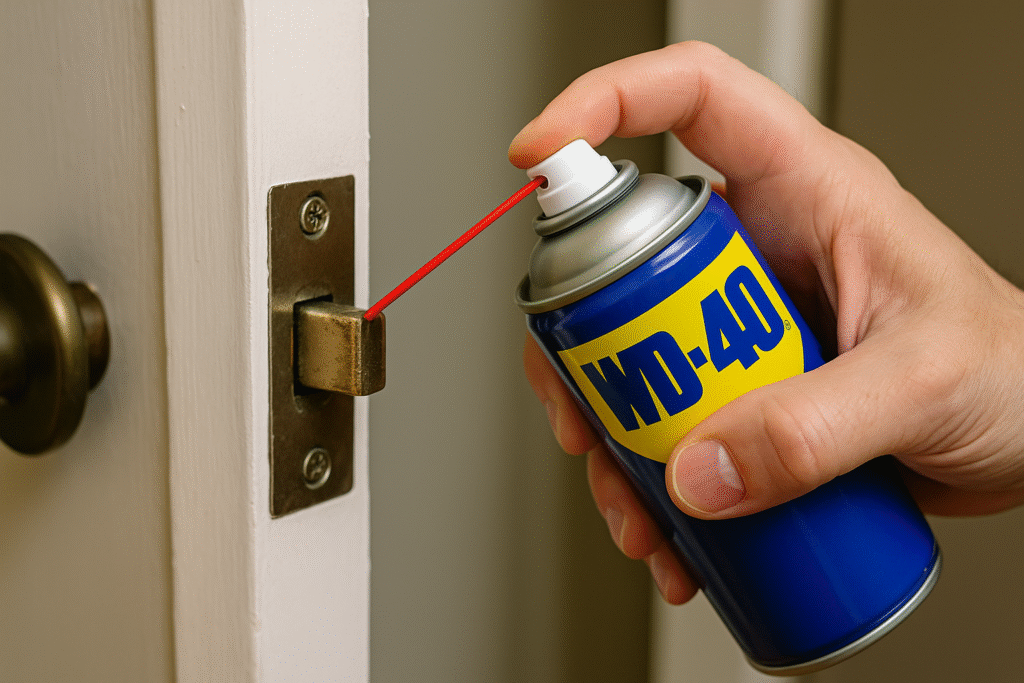
Step 3: Realign or Replace the Strike Plate
If cleaning and lubrication do not fix the issue of a door latch not fully retracting, the problem may lie with the strike plate. The strike plate is the metal piece attached to the door frame that receives the latch. If it is misaligned or worn, the latch can catch, stick, or fail to retract completely when closing the door. Realigning or replacing the strike plate is often the final step to restoring smooth functionality.
To check alignment, close the door slowly and watch how the latch meets the strike plate. If the latch rubs against the edge of the plate or does not line up with the opening, this is the source of the problem. Start by loosening the screws on the strike plate and adjusting its position slightly up, down, or sideways to improve alignment. Retighten the screws and test the door several times until the latch retracts fully and smoothly.
If the strike plate is bent, damaged, or the opening has become too narrow from wear, replacement is the best solution. Strike plates are inexpensive and widely available at hardware stores. Remove the old plate with a screwdriver, align the new one over the existing recess, and secure it with screws. For a secure fit, ensure the new plate sits flush with the door frame and the latch moves cleanly into its opening.
By realigning or replacing the strike plate, you eliminate one of the most common causes of a door latch not fully retracting. This ensures that the latch slides freely and that your door closes securely every time.
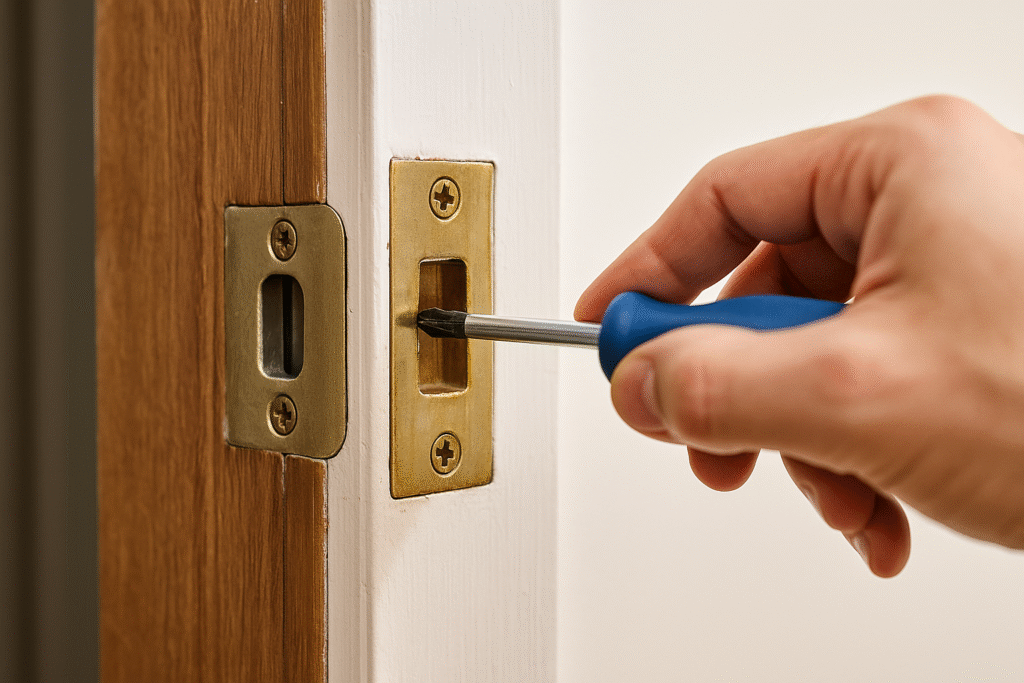
Common Mistakes to Avoid When Fixing Door Latch Not Fully Retracting
When repairing a door latch not fully retracting, it’s easy to make mistakes that either fail to solve the problem or create new issues. One of the most common errors is applying too much lubricant. While lubrication helps, overspraying can attract dust and grime over time, which causes the latch to stick again. Always use a light, targeted application for the best results.
Another mistake is neglecting to check alignment. Many homeowners focus only on the latch itself without inspecting the strike plate. If the latch works fine when the door is open but sticks when closed, the issue is usually alignment—not the latch mechanism. Skipping this step can leave you frustrated with the same problem persisting.
Using the wrong cleaning tools is also a frequent misstep. Harsh abrasives, like coarse sandpaper or metal files, can scratch and damage the latch, shortening its lifespan. Similarly, forcing the latch back manually with excessive pressure can bend internal components, making the situation worse.
Some people also attempt to fix the latch without turning the knob or lever to test movement. Testing while you work ensures that you see how the latch behaves in real time. Finally, forgetting to secure screws tightly after adjusting the strike plate can cause it to shift back into the wrong position. Avoiding these mistakes ensures your repair for a door latch not fully retracting is smooth, effective, and long-lasting.
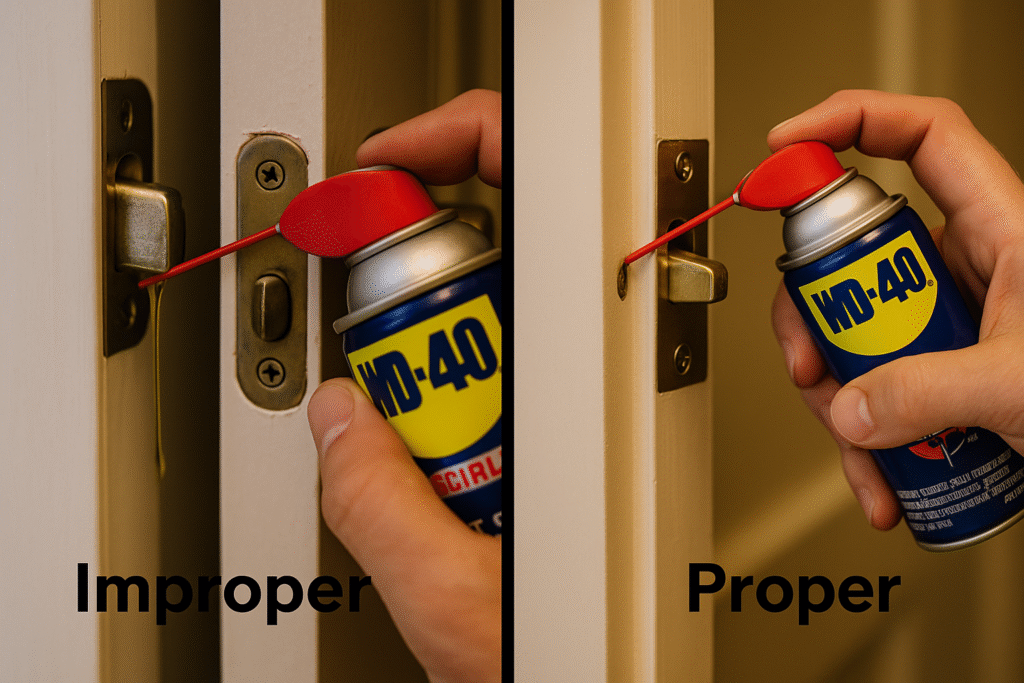
Alternative Methods for Fixing Door Latch Not Fully Retracting
If basic cleaning, lubrication, and strike plate adjustments don’t fully solve the problem of a door latch not fully retracting, there are a few alternative methods you can try. These approaches are helpful in cases where the latch mechanism is old, worn, or requires a more detailed adjustment.
One option is to file down the strike plate opening. If the latch almost aligns but gets stuck at the edge, slightly widening the strike plate hole with a metal file can create enough clearance for the latch to retract smoothly. This should be done carefully to avoid removing too much material or weakening the plate.
Another method is to check and adjust the door’s hinges. A sagging or misaligned door can cause the latch to miss the strike plate opening. Tightening loose hinge screws or installing longer screws into the top hinge can help lift and realign the door, ensuring that the latch fits properly. In some cases, placing a shim behind the hinge may also restore alignment.
If the latch spring inside the mechanism is weak, replacing the entire latch assembly may be the most reliable fix. Most latch assemblies are inexpensive and compatible with standard doorknobs or handles. Swapping out the old latch for a new one restores smooth function and eliminates recurring issues.
These alternative methods provide more permanent solutions for a door latch not fully retracting. Whether it’s adjusting the door alignment, modifying the strike plate, or replacing the latch entirely, these fixes ensure that your door will close securely and operate reliably.
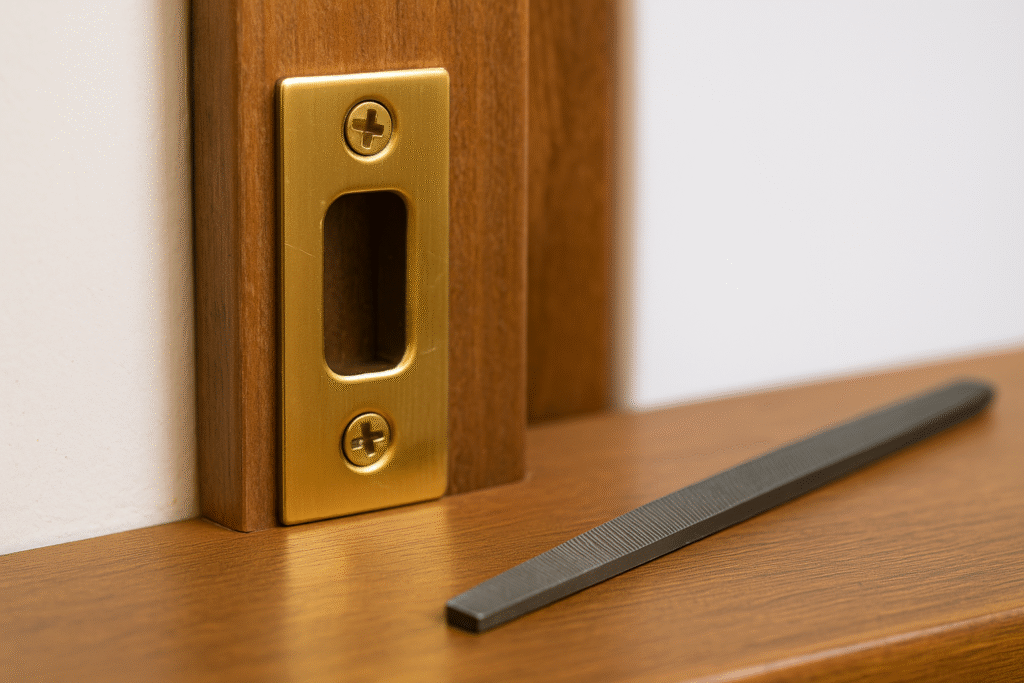
Expert Tips and Best Practices
Fixing a door latch not fully retracting often comes down to small adjustments and careful handling. Experts recommend starting with the simplest fixes first, such as cleaning and lubricating, before moving on to hardware adjustments or replacements. This approach minimizes the risk of damaging the latch or door frame unnecessarily.
One of the most important best practices is to use the right lubricant. Silicone-based sprays are often better than oil-based options, as they resist attracting dirt and dust. When applying lubrication, always spray lightly and work the latch several times to ensure even coverage. Wipe away any excess to avoid buildup that could cause the same issue later.
Technicians also emphasize checking the door’s alignment as part of the repair process. A door that sags or shifts in its frame will continuously put pressure on the latch, leading to recurring problems. Reinforcing hinge screws, adding longer screws to the top hinge, or using shims can restore alignment and prevent future issues with the latch.
If replacing parts, always choose high-quality latch assemblies and strike plates. Cheap hardware may solve the immediate problem but often wears out quickly, bringing back the issue of a door latch not fully retracting. Finally, test the latch repeatedly after each step of the repair. Continuous testing ensures that every adjustment you make is actually improving the latch function.
For general guidance on home safety and hardware repairs, resources like the Family Handyman DIY guide provide detailed instructions and tips from professionals. Following these best practices ensures your latch repair is durable, safe, and effective.
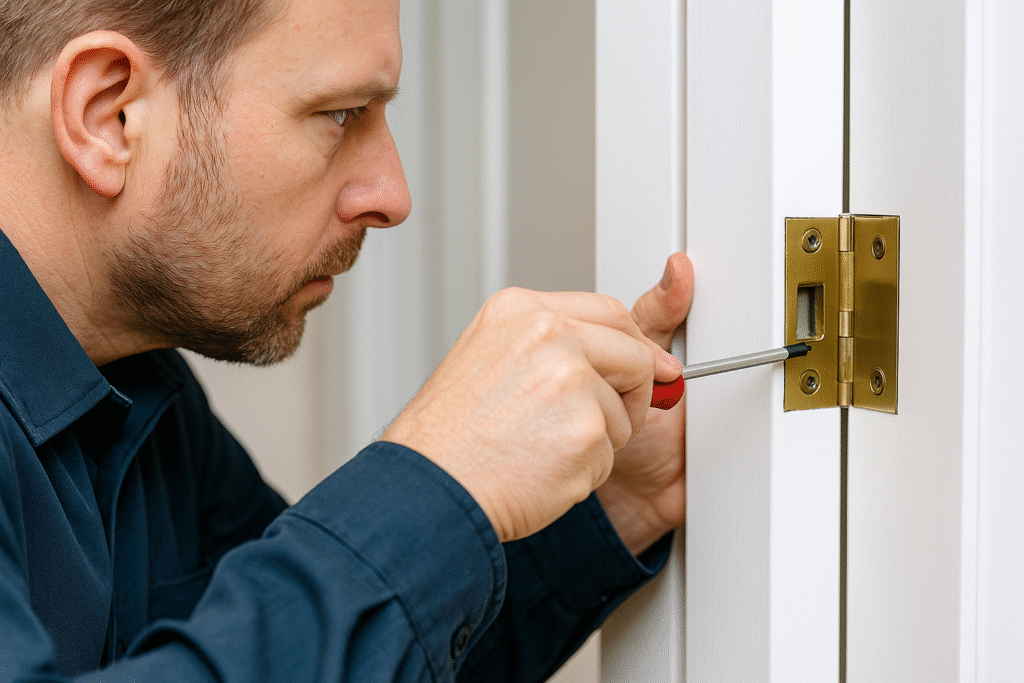
Frequently Asked Questions About Fixing Door Latch Not Fully Retracting
Homeowners often have questions when dealing with a door latch not fully retracting. Below are some of the most common ones, answered clearly to help guide you through the repair process.
Why is my door latch not retracting fully?
The most common causes are dirt buildup, lack of lubrication, a misaligned strike plate, or a worn-out latch spring. Simple cleaning and alignment often resolve the issue.
Can I fix this problem without removing the latch?
Yes. In many cases, cleaning and lubricating the latch from the outside restores smooth operation. However, if the problem persists, removing the latch for inspection may be necessary.
Should I use oil or grease to lubricate the latch?
Avoid heavy oils or grease, as they attract dust and dirt. A light silicone spray or WD-40 is best for keeping the mechanism clean and smooth without buildup.
What if my latch still won’t retract after cleaning?
If cleaning and alignment don’t help, the internal spring may be worn. Replacing the latch assembly is the most reliable long-term solution in this case.
Where can I find more reliable home repair advice?
For additional guidance, the This Old House repair guide offers expert insights and tutorials on fixing common household hardware problems.
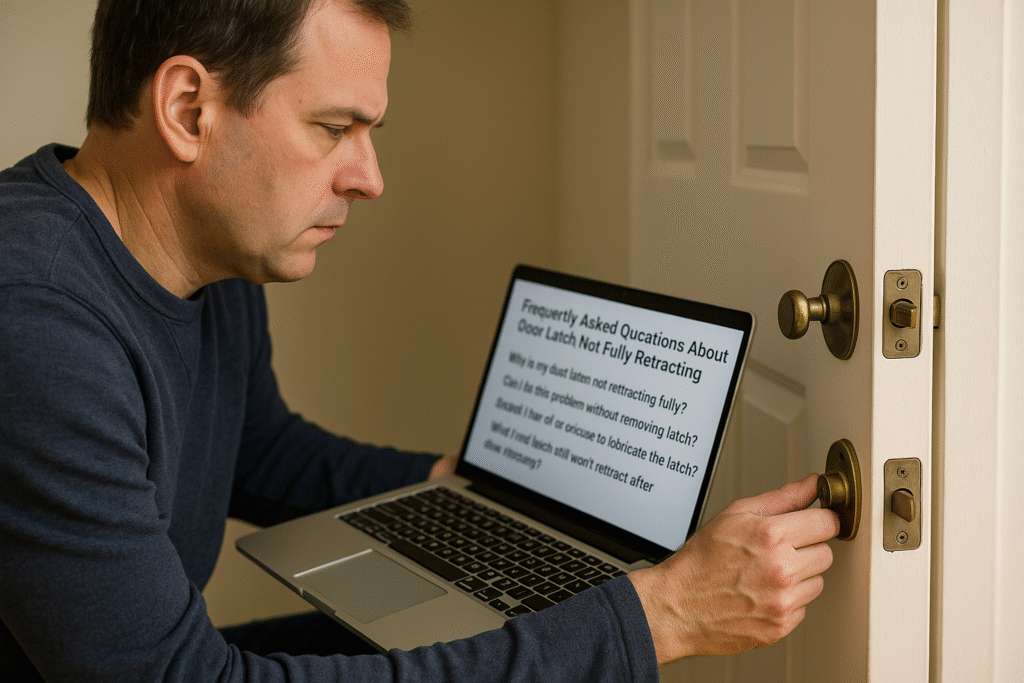
📌 Read Similar Topics
- Fix Moen Shower Valve
- How to Fix a Tear in Leather Shoes
- Unsticking a Zipper
- Fix Burn Hole on Couch
- Dishwasher Replacement Cost Explained
Conclusion: Putting It All Together
Dealing with a door latch not fully retracting may seem like a small annoyance, but it has big implications for security, convenience, and everyday functionality. A door that doesn’t close or lock properly can leave your home vulnerable and cause unnecessary frustration. Fortunately, most latch problems can be resolved with simple tools and a step-by-step approach.
Throughout this guide, we’ve covered the essential process: inspecting and testing the latch, cleaning and lubricating the mechanism, realigning or replacing the strike plate, and exploring alternative fixes when necessary. We also discussed common mistakes to avoid and expert tips that ensure the repair is safe, long-lasting, and effective. With this knowledge, you can confidently troubleshoot and restore your door’s functionality.
The best part about fixing a door latch not fully retracting is that it often requires only basic DIY skills. By taking the time to maintain and repair your latch, you’ll save money, avoid calling a locksmith, and keep your household secure. And if the latch is too damaged to repair, replacement parts are inexpensive and easy to install.
In the end, knowing how to handle this common issue empowers you to take better care of your home. With patience, the right tools, and the steps outlined here, your doors will close smoothly and securely—restoring peace of mind and convenience to your daily routine.
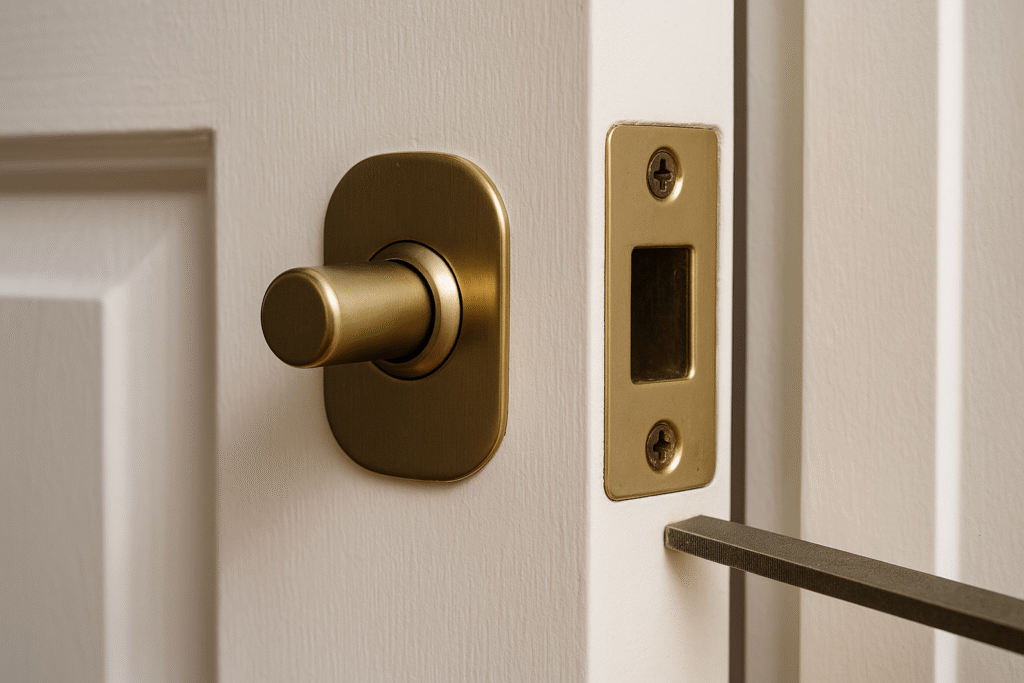
Share this:
- Click to share on Facebook (Opens in new window) Facebook
- Click to share on X (Opens in new window) X
- Click to share on LinkedIn (Opens in new window) LinkedIn
- Click to share on Reddit (Opens in new window) Reddit
- Click to share on X (Opens in new window) X
- Click to share on Threads (Opens in new window) Threads
- Click to share on WhatsApp (Opens in new window) WhatsApp

